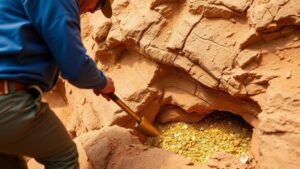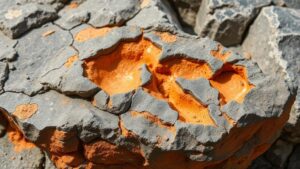Beginner’s Guide to Identifying Pay Streaks Along River Channels
Beginner’s Guide to Identifying Pay Streaks Along River Channels
Pay streaks are areas along river channels that contain valuable resources, such as gold and other minerals. Understanding how to identify these streaks is essential for prospectors and mining enthusiasts. This guide will break down the characteristics of pay streaks, methods to locate them, and best practices for effective prospecting.
What are Pay Streaks?
Pay streaks are typically accumulations of heavier minerals that settle in distinct layers within a riverbed. form as a result of the natural processes of erosion and sedimentation, where heavier particles are deposited in areas of reduced water flow. For example, in a river system, pay streaks often accumulate behind boulders, at the inside bends of river curves, or in depressions along the riverbed.
Characteristics of Pay Streaks
Identifying pay streaks requires an understanding of their key characteristics:
- Location: Pay streaks are usually found in areas where water velocity decreases, allowing heavier materials to settle. Look for spots behind natural obstructions like large rocks or logs.
- Composition: Pay streaks often consist of heavier minerals such as gold, platinum, and black sand. Evaluating the soil composition can be a good indicator of potential wealth.
- Layering: Pay streaks may show clear layering due to sediment deposition. Observing varying soil colors or textures can provide insight into where pay streaks may exist.
Methods for Locating Pay Streaks
Several methods can be applied to locate pay streaks effectively:
- Visual Inspection: Start with a visual assessment of the river channel. Look for signs of erosion, exposed sediment layers, and natural traps where heavy materials can accumulate.
- Gold Panning: This classic method helps in evaluating the presence of gold in river gravels. Collect samples from different parts of the riverbed and pan them to see if any gold particles are present.
- Metal Detecting: Using a metal detector can help locate pay streaks containing metallic resources. Focus on areas near known deposits for improved chances of discovery.
Real-World Example: Prospecting in California
A prime example of successful pay streak identification can be found in the historic gold mining areas of California, particularly along the American River. Many prospectors have utilized knowledge of river dynamics and pay streak formation to identify rich deposits. By focusing on areas near Natural Springs, where water speed decreases, they have uncovered significant amounts of gold.
Common Questions About Identifying Pay Streaks
Prospectors often have specific questions about pay streak identification:
- How do I know if I’ve found a pay streak? If samples yield visible gold or other valuable heavy minerals consistently from a specific area, its likely a pay streak.
- Are all river channels likely to have pay streaks? Not all river channels are equal. Pay streaks are more likely to occur in areas with a history of heavy erosion and mineral deposition.
Actionable Takeaways
Identifying pay streaks along river channels can be rewarding, both financially and educationally. Here are steps to put this knowledge into action:
- Conduct initial research on local river systems and known deposits.
- Engage in on-site inspections with appropriate gear, such as shovels, panning kits, and metal detectors.
- Document findings to help refine future prospecting efforts.
By understanding the characteristics of pay streaks and employing effective identification methods, beginners can increase their chances of successful resource extraction along river channels.



